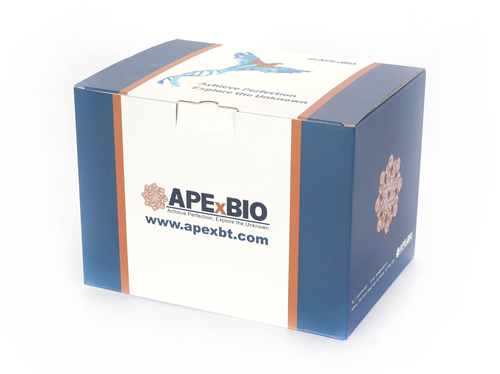Recombinant Human IL-13
Interleukin-13 (IL-13) is a monomeric 17 kDa immunoregulatory cytokine that plays a key role in the pathogenesis of allergy, cancer, and tissue fibrosis. It is secreted by several helper T cell subsets, NK cells, mast cells, eosinophils, basophils, and visceral smooth muscle cells [1-3]. Mature human IL-13 shares approximately 58% amino acid sequence identity with mouse and rat IL-13. Despite the low homology, it exhibits cross-species activity between human, mouse, and rat [4]. IL-13 suppresses the production of proinflammatory cytokines and other cytotoxic substances by macrophages, fibroblasts, and endothelial cells. On B cells, it promotes cellular activation, immunoglobulin class switching to IgE, and the up-regulation of CD23/Fc epsilon RII [1, 5]. IL-13 binds with low affinity to the transmembrane IL-13 R alpha 1 which then forms a signaling complex with the transmembrane IL-4 R alpha [6-8]. This high affinity receptor complex also functions as the type 2 IL-4 receptor [6, 7]. IL-13 R alpha 2 inhibits responses to both IL-13 and IL-4. It binds IL-13 with high affinity [9, 10] and prevents IL-13 from signaling through the IL-13 R alpha 1/IL-4 R alpha complex [11, 12]. It also blocks signaling through IL-4-occupied IL-13 R alpha 1/IL-4 R alpha receptor complexes [12, 13]. In addition, IL-13-bound IL-13 R alpha 2 can directly promote tumor cell invasiveness and the development of tissue fibrosis [14-16].
Reference
[1]. Saggini, A. et al. (2011) Int. J. Immunopathol. Pharmacol. 24:305.
[2]. Gallo, E. et al. (2012) Eur. J. Immunol. 42:2322.
[3]. Liang, H.E. et al. (2012) Nat. Immunol. 13:58.
[4]. Ruetten, H. and C. Thiemermann (1997) Shock 8:409.
[5]. McKenzie, A.N. et al. (1993) Proc. Natl. Acad. Sci. USA 90:3735.
[6]. Aman, M.J. et al. (1996) J. Biol. Chem. 271:29265.
[7]. Zurawski, S.M. et al. (1995) J. Biol. Chem. 270:13869.
[8]. Andrews, A.L. et al. (2002) J. Biol. Chem. 277:46073.
[9]. Chen, W. et al. (2009) J. Immunol. 183:7870.
[10]. Daines, M.O. et al. (2007) J. Allergy Clin. Immunol. 119:375.
[11]. Kasaian, M.T. et al. (2011) J. Immunol. 187:561.
[12]. Andrews, A.-L. et al. (2006) J. Allergy Clin. Immunol. 118:858.
[13]. Rahaman, S.O. et al. (2002) Cancer Res. 62:1103.
[14]. Fujisawa, T. et al. (2009) Cancer Res. 69:8678.
[15]. Fujisawa, T. et al. (2011) Int. J. Cancer 131:344.
[16]. Fichtner-Feigl, S. et al. (2006) Nat. Med. 12:99.
|
Accession # |
AAK53823 |
|
Alternate Names |
Human IL13; interleukin-13; IL13; IL-13; interleukin 13; MGC116786 |
|
Source |
Human embryonic kidney cell, HEK293-derived human IL-13 protein |
|
Protein sequence |
Gly21-Asn132 |
|
M.Wt |
13.3 kDa |
|
Appearance |
Solution protein. |
|
Stability & Storage |
Avoid repeated freeze-thaw cycles. It is recommended that the protein be aliquoted for optimal storage. 3 years from date of receipt, -20 to -70 °C as supplied. |
|
Concentration |
0. 2 mg/mL |
|
Formulation |
Dissolved in sterile PBS buffer. |
|
Reconstitution |
We recommend that this vial be briefly centrifuged prior to opening to bring the contents to the bottom. This solution can be diluted into other aqueous buffers. |
|
Biological Activity |
Measured in a cell proliferation assay using TF-1 human erythroleukemic cells. The EC50 for this effect is 0.5-2.0 ng/mL. |
|
Shipping Condition |
Shipping with dry ice. |
|
Handling |
Centrifuge the vial prior to opening. |
|
Usage |
For Research Use Only! Not to be used in humans. |
Quality Control & DataSheet
- View current batch:
-
Purity > 95%, determined by SDS-PAGE.
- Datasheet
Endotoxin: <0.010 EU per 1 ug of the protein by the LAL method.








